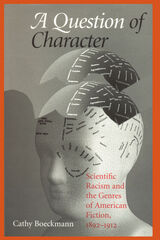
A Smithsonian Book of the Year
A Nature Book of the Year
“Provides much-needed foundation of the relationship between museums and Native Americans.”
—Smithsonian
In 1864 a US Army doctor dug up the remains of a Dakota man who had been killed in Minnesota and sent the skeleton to a museum in Washington that was collecting human remains for research. In the “bone rooms” of the Smithsonian, a scientific revolution was unfolding that would change our understanding of the human body, race, and prehistory.
Seeking evidence to support new theories of racial classification, collectors embarked on a global competition to recover the best specimens of skeletons, mummies, and fossils. As the study of these discoveries discredited racial theory, new ideas emerging in the budding field of anthropology displaced race as the main motive for building bone rooms. Today, as a new generation seeks to learn about the indigenous past, momentum is building to return objects of spiritual significance to native peoples.
“A beautifully written, meticulously documented analysis of [this] little-known history.”
—Brian Fagan, Current World Archeology
“How did our museums become great storehouses of human remains? Bone Rooms chases answers…through shifting ideas about race, anatomy, anthropology, and archaeology and helps explain recent ethical standards for the collection and display of human dead.”
—Ann Fabian, author of The Skull Collectors
“Details the nascent views of racial science that evolved in U.S. natural history, anthropological, and medical museums…Redman effectively portrays the remarkable personalities behind [these debates]…pitting the prickly Aleš Hrdlička at the Smithsonian…against ally-turned-rival Franz Boas at the American Museum of Natural History.”
—David Hurst Thomas, Nature



Boeckmann links character, literary genre, and science, revealing how major literary works both contributed to and disrupted the construction of race in turn-of-the-century America.
In A Question of Character, Cathy Boeckmann establishes a strong link between racial questions and the development of literary traditions at the end of the 19th century in America. This period saw the rise of "scientific racism," which claimed that the races were distinguished not solely by exterior appearance but also by a set of inherited character traits. As Boeckmann explains, this emphasis on character meant that race was not only a thematic concern in the literature of the period but also a generic or formal one as well.
Boeckmann explores the intersections between race and literary history by tracing the language of character through both scientific and literary writing. Nineteenth-century pseudo-sciences such as phrenology and physiognomy had a vocabulary for discussing racial character that overlapped conceptually with the conventions for portraying race in literature. Through close readings of novels by Thomas Dixon, Mark Twain, William Dean Howells, Charles Chesnutt, and James Weldon Johnson—each of which deals with a black character "passing" as white—Boeckmann shows how this emphasis on character relates to the shift from romantic and sentimental fiction to realism. Because each of these genres had very specific conventions regarding the representation of character, genres often dictated how races could be depicted.
READERS
Browse our collection.
PUBLISHERS
See BiblioVault's publisher services.
STUDENT SERVICES
Files for college accessibility offices.
UChicago Accessibility Resources
home | accessibility | search | about | contact us
BiblioVault ® 2001 - 2024
The University of Chicago Press









